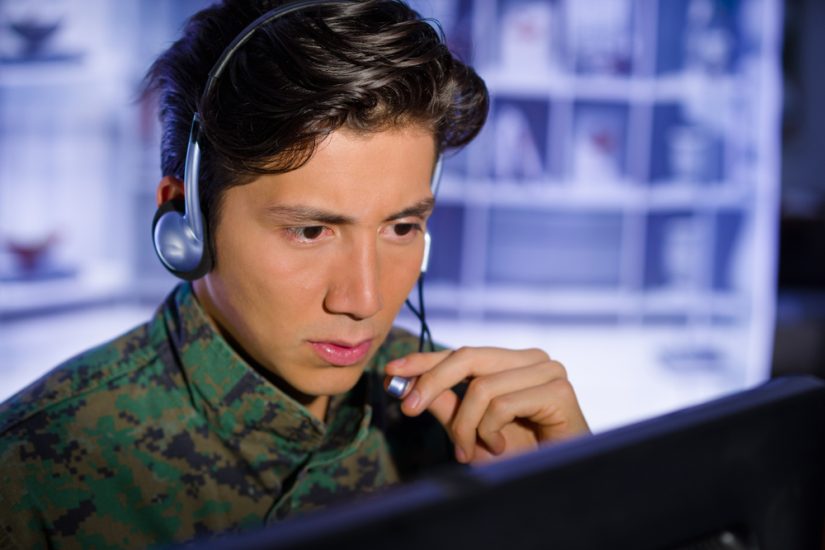“One quality of air defence from outside could also be to engage targets over the airspace of Ukraine, at least where we have them in reach in the western part of Ukraine,” said Nico Lange. Non-resident Senior Fellow with the Transatlantic Defense and Security Program at the Center for European Policy Analysis (CEPA), in a May 10 briefing on military support to Ukraine.
This would have the double benefit of strengthening the air defence around cities such as Kyiev while allowing the Ukrainians to move their air defence systems closer to the front lines in the east.
“Under international law this is possible to do; it’s a question of political will, arguably more for the European partners who have the Patriot systems in Poland and Romania, not so much for the US.”
In its recent report “An Urgent Matter of Drones”, CEPA has made a number of recommendation for NATO and its allies to strength counter-UAS capabilities. These include:
- First, the alliance must clearly assess UAS and C-UAS capability requirements based on lessons learned from recent conflict, technological developments underway, and expected future threats and challenges.
- Second, UAS and C-UAS capability development and policy development must be guided by the need for scale and interoperability and the imperatives of multidomain operations.
- Third, enabling capabilities such as AI tools, data architecture, communications networks, and cyber and space capabilities and services must be enhanced.
- Fourth, NATO and individual allies should leverage the significant innovation efforts underway while improving operational experimentation and procurement processes.
- Fifth, NATO should refine or establish joint allied doctrine, operational concepts, and TTPs to cover new and expanded roles of UAS and the growing importance of C-UAS.
- Sixth, both UAS and C-UAS capability integration into NATO and national forces will require a special focus on human resource development.
“The proliferation of low-cost, expendable UAS and loitering munitions is revolutionizing the sensor-to-shooter cycle and challenges the survivability of forces and systems across the depth and breadth of the battlefield,” said the CEPA report. £Furthermore, as one NATO military commentator put it, “peer competitors to NATO can be expected to employ UAS at the same level of technology, and under comparable operational principles, as the alliance.
“Hence, C-UAS should be at top of NATO’s priorities with UAS.
“In general, the previous recommendations with respect to UAS doctrine development, capability and concept development for MDO, innovation and procurement, and interoperability apply to C-UAS capabilities. NATO and allied nations should:
- Invest in C-UAS capabilities and adopt them at scale across the military based on a comprehensive and cost-effectiveness distributed approach that ensures both air defense of forces and areas and single vehicle/platform/system protection.
- Ensure C-UAS capabilities available to NATO include a layered mix of kinetic and non-kinetic effectors….. directed energy weapons, including portable C-UAS guns;
- Mobile short-range air defense systems (e.g., M-SHORAD), counter-rocket, artillery and mortar (C-RAM) systems, and anti-aircraft direct fire systems;
- Cyber warfare against UAS ground terminals and control stations;
- Air-to-air weapons for short range air defense and longer-range air interdiction.
- Expedite the development of joint allied C-UAS doctrine, currently in the drafting phase. An approved C-UAS doctrine would help streamline and add coherence to other C-UAS work strands, including the definition of common capability requirements, concepts of operation and employment, and TTPs;
- Ensure harmonization of C-UAS-related policies across the NATO enterprise;
- Develop, implement, and verify C-UAS material and operational standards;
- Expand the role and scale of C-UAS into NATO Integrated Air and Missile Defense (IAMD) policy based on recent developments, including lessons learned from recent conflicts. In particular, consider the establishment of a robust C-UAS architecture (sensors, C2 nodes, effectors, data fabric) to expedite the kill chain and improve the coordination between C-UAS, other IAMD components. and civilian air traffic control authorities;
- Increase the number and frequency of technical exercises and experimentations;
- Ensure C-UAS capabilities and concepts are incorporated as part of IAMD into collective and joint training at all levels;
- In light of technological developments and lessons learned from recent conflicts, ensure C-UAS are addressed at scaled within the NATO Defense Planning Process (especially 2024 MCR and 2025 capability apportionment steps);
- Include C-UAS training, concepts, doctrine, and development in a NATO UAS center of excellence;
- Review military organizations and force structure in parallel with C-UAS doctrine and concept development to ensure the right C-UAS systems and capabilities at scale for air defense and force protection in light of the emerging challenges to survivability posed by UAS, including persistent observation connected to lethal fires.
(Image: Shutterstock)
For more information




